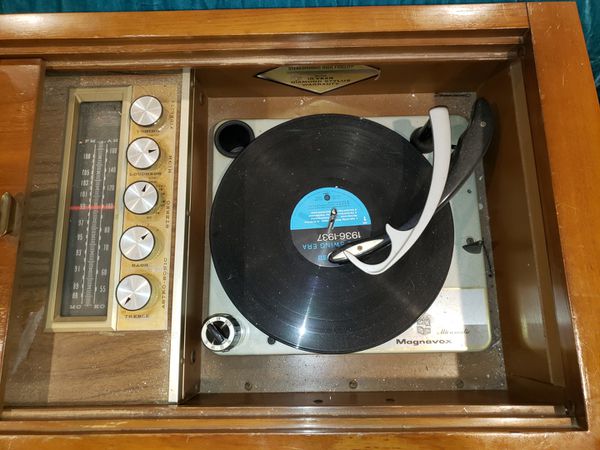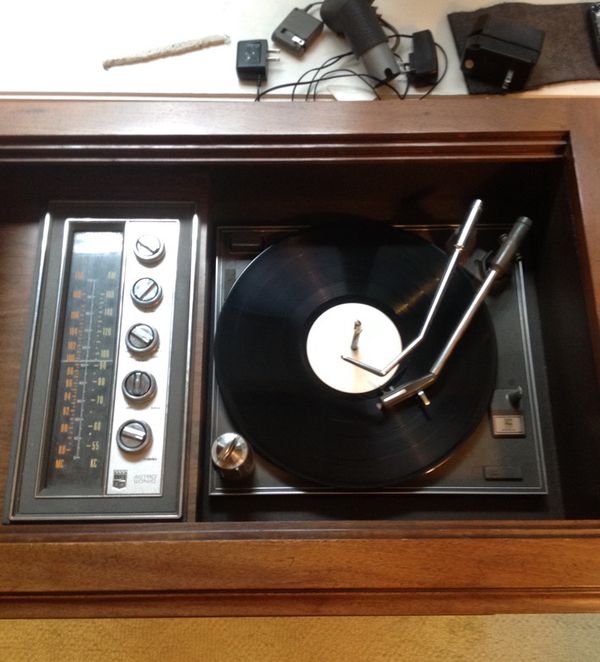

While this machine required manually placing a single vinyl record on the turntable, other models were designed to stack several records on a spindle, dropping a new record when the previous one finished playing. In the late 1960s, some of the most iconic music of the era were likely played on this record player: songs like the Beatles’ “Hey Jude,” Otis Redding’s “(Sittin’ on) The Dock of the Bay,” or Simon and Garfunkel’s “Mrs. It ran on six C batteries and could play 33 1/3 and 45 r.p.m. Its plastic case measures eleven by twelve inches including a molded carrying handle. The player shown here is a small, lightweight Solid State Panasonic SB-330 that dates to about 1968.

Manufacturers saw a demand for a mobile device and began to offer battery-operated record players for sale. Like most American teenagers, they needed to express some independence, to listen to the music of their choice without parental oversight.

Some young people, however, wanted to take their music with them when they were away from home with friends. Most homes of the 1960s had a record player, either a large console cabinet or a smaller portable player. last year, but these sales don’t come close to meeting the numbers of fifty years ago, when vinyl was supreme. Over ten million vinyl recordings were sold in the U.S. Considered an obsolete technology for some thirty years, audiophiles are returning to LP (Long Play) vinyl records because they consider their sound to be warmer and richer than digital versions. Vinyl records are experiencing a surprising resurgence in popularity in the twenty-first century.


 0 kommentar(er)
0 kommentar(er)
